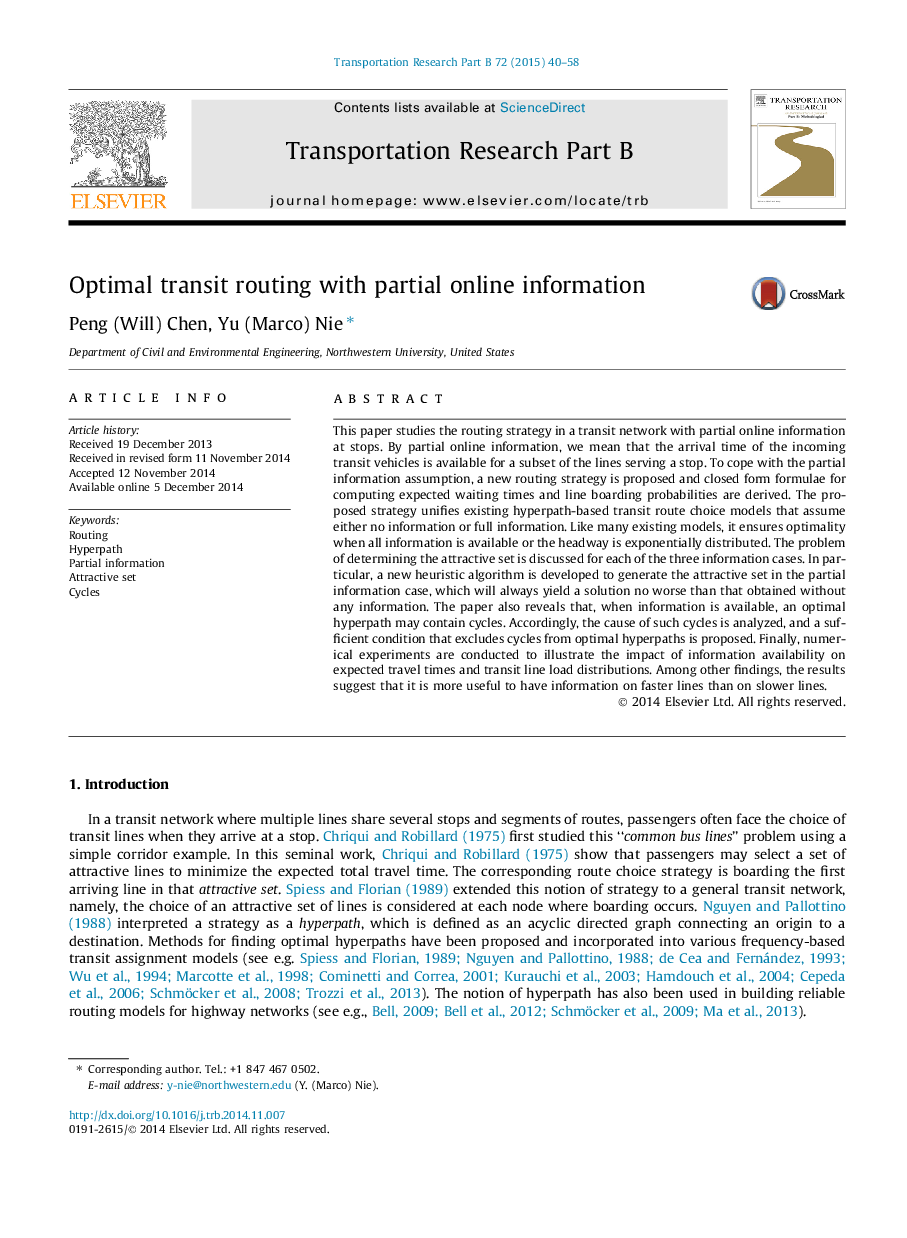| Article ID | Journal | Published Year | Pages | File Type |
|---|---|---|---|---|
| 1132029 | Transportation Research Part B: Methodological | 2015 | 19 Pages |
•This paper studies routing strategy with partial online information at transit stops.•A new routing strategy is proposed to model passengers’ routing decision choice.•Closed form formulae for computing transit performance measures are derived.•A new heuristic algorithm is developed to generate the attractive set.•A sufficient condition is proposed to exclude cycles when information is available.
This paper studies the routing strategy in a transit network with partial online information at stops. By partial online information, we mean that the arrival time of the incoming transit vehicles is available for a subset of the lines serving a stop. To cope with the partial information assumption, a new routing strategy is proposed and closed form formulae for computing expected waiting times and line boarding probabilities are derived. The proposed strategy unifies existing hyperpath-based transit route choice models that assume either no information or full information. Like many existing models, it ensures optimality when all information is available or the headway is exponentially distributed. The problem of determining the attractive set is discussed for each of the three information cases. In particular, a new heuristic algorithm is developed to generate the attractive set in the partial information case, which will always yield a solution no worse than that obtained without any information. The paper also reveals that, when information is available, an optimal hyperpath may contain cycles. Accordingly, the cause of such cycles is analyzed, and a sufficient condition that excludes cycles from optimal hyperpaths is proposed. Finally, numerical experiments are conducted to illustrate the impact of information availability on expected travel times and transit line load distributions. Among other findings, the results suggest that it is more useful to have information on faster lines than on slower lines.
